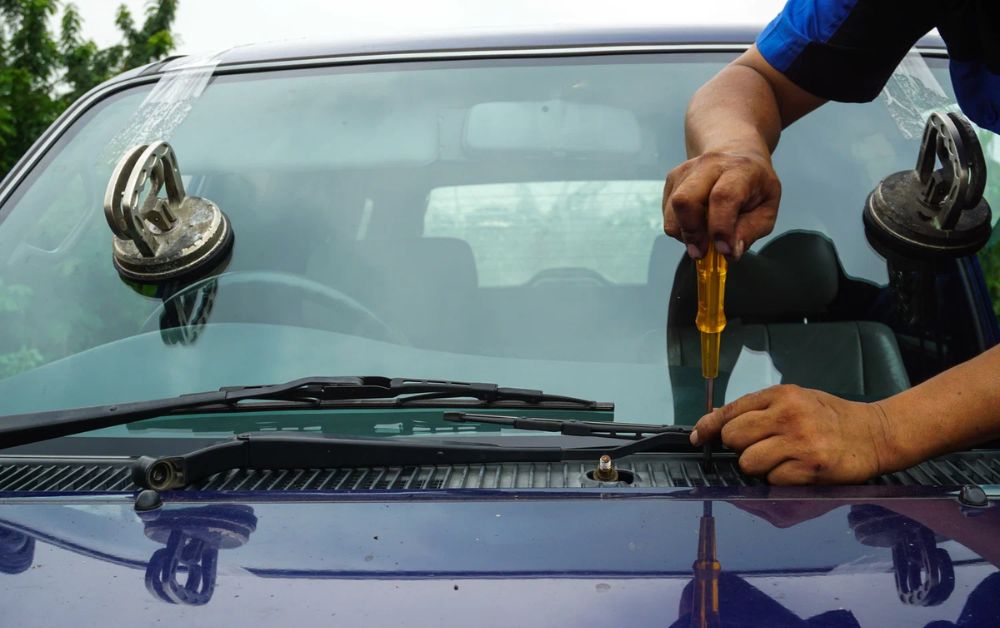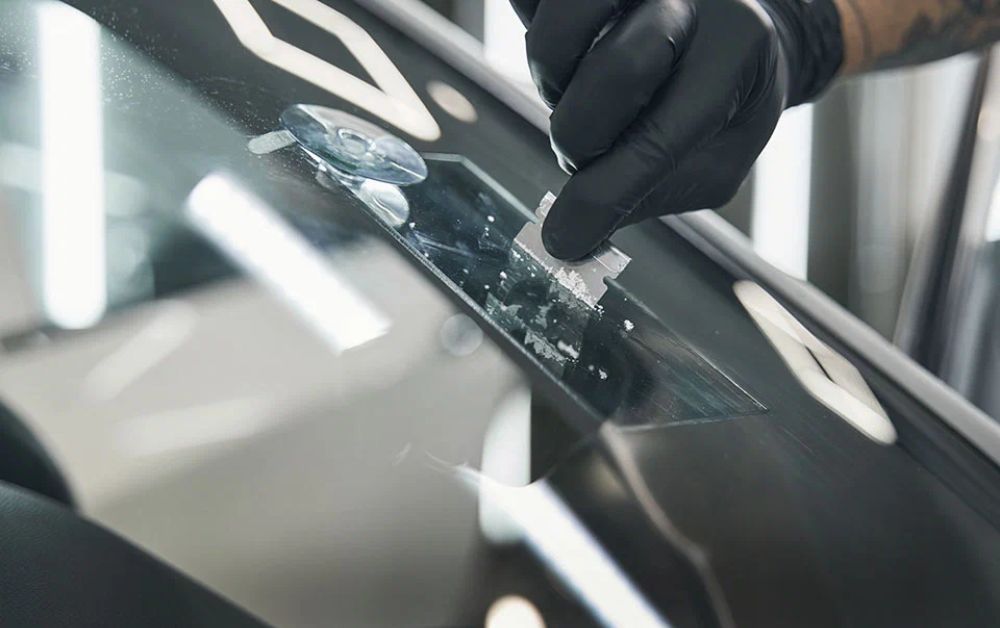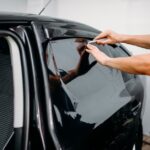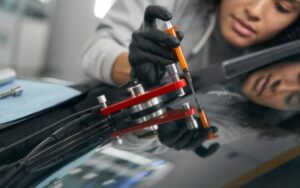
Your car’s windshield serves a vital purpose—protecting you from debris, wind, and weather elements while also providing clarity for safe driving. However, windshields are prone to damage from road debris, accidents, and even sudden changes in temperature. One of the most common types of damage to windshields are cracks, which can range from minor chips to large, dangerous fractures. Understanding the different types of windshield cracks—such as bullseye, star, and others—can help you determine the severity of the damage and take appropriate action to repair or replace the windshield.
In this blog, we will discuss the most common types of windshield cracks, their causes, and how to deal with them effectively. It’s important to address windshield damage promptly to avoid further deterioration that could lead to dangerous driving conditions.

1. Bullseye Crack
One of the most common types of windshield cracks is the bullseye crack, which gets its name from the distinct appearance of the crack. A bullseye crack typically forms when a rock or other debris hits the windshield with force, creating a circular crack with a small chip in the center. This type of crack is usually round or oval in shape, with a smooth surface around the center of the impact.
Causes of Bullseye Cracks:
Bullseye cracks are often caused by objects such as small rocks, gravel, or other debris hitting the windshield while driving. When these objects make contact with the glass, they create a small dent or chip at the point of impact, and the surrounding glass may begin to crack outward in a circular pattern.
Repairing a Bullseye Crack:
Bullseye cracks are typically easier to repair than other types of cracks, especially if the crack is small and does not affect the driver’s line of sight. A technician can use a special resin to fill the chip and stop the crack from spreading. However, if the crack is large or deep, windshield replacement may be necessary.
2. Star Crack
A star crack is another common type of windshield damage. As the name suggests, a star crack resembles a star-shaped pattern, with cracks radiating outward from the point of impact, forming a web-like structure. This type of crack typically results from a sharp object, such as a rock or a piece of road debris, striking the windshield at a high velocity.
Causes of Star Cracks:
Like the bullseye crack, star cracks are caused by debris hitting the windshield. However, the difference lies in the force and angle at which the object strikes the glass. When an object strikes the windshield with greater force or at a certain angle, it causes a spiderweb-like pattern to form.
Repairing a Star Crack:
Star cracks can be more difficult to repair due to the complexity of the crack’s structure. Small star cracks may be repaired using resin injection, similar to bullseye cracks. However, if the star crack is large or significantly impacts the integrity of the windshield, replacement may be the only option.
3. Long Crack
A long crack is a crack that extends across the length of the windshield. These cracks usually occur as a result of a more severe impact or extreme temperature changes. A long crack can compromise the entire structural integrity of the windshield and make it more susceptible to further damage.
Causes of Long Cracks:
Long cracks can be caused by a direct impact from a large object, such as a rock or a flying piece of debris. Extreme temperatures can also cause stress on the windshield, leading to a long crack. For example, rapid changes in temperature—such as pouring hot water on a cold windshield—can cause the glass to expand and contract, resulting in a crack that can stretch across the entire surface of the windshield.
Repairing a Long Crack:
Repairing a long crack is often difficult, especially if the crack has extended across a significant portion of the windshield. While resin injection can sometimes be used to seal smaller long cracks, most cases require windshield replacement. It’s essential to address long cracks as soon as possible to avoid further complications and safety risks.
4. Combination Crack
A combination crack occurs when a windshield experiences multiple types of damage simultaneously. A combination crack typically features a mix of a bullseye, star, or long crack pattern, often caused by an impact from an object that hits the windshield at a particular angle or with great force.
Causes of Combination Cracks:
Combination cracks often occur when the windshield is struck by large or sharp objects at a high speed. The impact causes multiple types of cracks to form, creating a complicated pattern. In many cases, combination cracks can result from debris that bounces off the windshield and strikes it multiple times, leading to multiple points of damage.
Repairing a Combination Crack:
Repairing a combination crack is usually more challenging due to the complexity of the damage. Depending on the size and severity of the cracks, it may be possible to fill the cracks with resin. However, larger or more complicated combination cracks often require windshield replacement to ensure the safety and integrity of the glass.
5. Edge Crack
An edge crack starts at the edge of the windshield and extends inward. These cracks are often caused by impacts from debris or temperature changes, similar to other types of cracks, but they typically begin at the perimeter of the windshield rather than in the center.
Causes of Edge Cracks:
Edge cracks can occur from the force of a stone or debris striking the windshield at a specific angle, or from stress caused by temperature fluctuations. As the windshield’s edges are typically the weakest points, they are more susceptible to damage from even minor impacts.
Repairing Edge Cracks:
Edge cracks are often difficult to repair because they tend to spread quickly. It’s essential to address edge cracks as soon as they appear to prevent them from extending further into the windshield. In many cases, replacing the windshield is the best course of action to maintain structural integrity.

Conclusion
Windshield cracks are a common problem for drivers, and understanding the different types of cracks—such as bullseye, star, long cracks, combination cracks, and edge cracks—is essential for knowing how to handle the damage properly. Depending on the type of crack, repairs may be possible, or replacement may be required to ensure your safety on the road.
When dealing with windshield damage, it’s always best to consult professionals who specialize in windshield repair and replacement. Windmaster Autocare LLC is a trusted name in the Abu Dhabi area, offering expert services to repair or replace damaged windshields. With a focus on high-quality materials and craftsmanship, Windmaster Autocare LLC ensures that your vehicle’s windshield is restored to its optimal condition, allowing you to drive with peace of mind. If you’re dealing with windshield damage, make sure to contact Windmaster Autocare LLC for expert assistance and reliable service.






No comment yet, add your voice below!